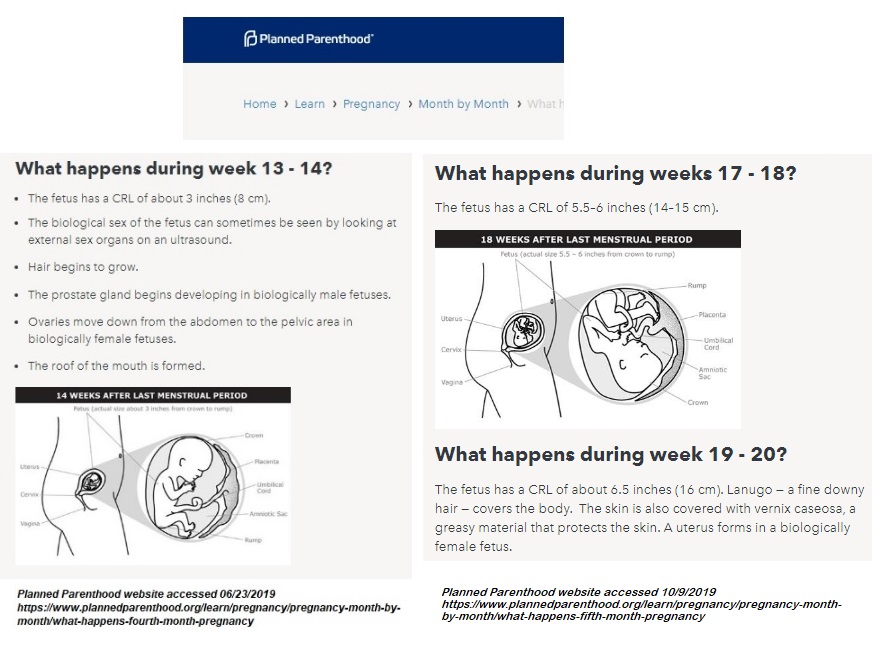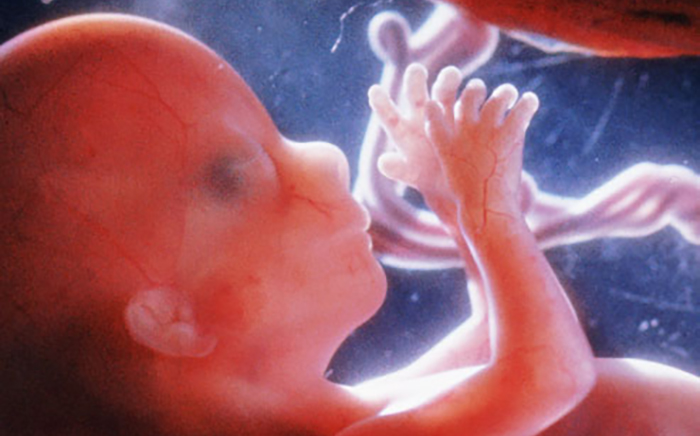Abortionists who use the D&E abortions in the second trimester — the most common during that time frame — admit that the procedure is much more complicated than earlier abortions. This is why the State of Mississippi has sought to restrict the controversial dismemberment procedure after 15 weeks of pregnancy. The state’s case will soon be brought before the U.S. Supreme Court to determine its constitutionality.
The D&E procedure, as described by former abortionist Dr. Anthony Levatino in the video below, involves dismembering a preborn child’s arms and legs from her torso before crushing her skull. The procedure is so brutal that one abortionist claimed the term “butchers” might be accurately applied to abortionists, while others have admitted the procedure is violent:
D&E dismemberment abortion most common
While all abortions have potentially serious risks, the abortion industry will acknowledge some risk increase into the second trimester.
“Although second-trimester abortion is very safe, it is associated with a higher risk of complications compared to early abortion, and it’s more expensive for women,” abortionist Daniel Grossman once told NBC News.
Abortionist Willie Parker admitted the increased risk (though downplaying it in general) in his book, “Life’s Work: A Moral Argument for Choice”:
Everything is more difficult in a second trimester abortion… In these procedures, the risk of serious complications increases (although at any gestational age the risk is less than 1 percent)…. [because] in a second trimester abortion I have to evacuate her uterus differently.
“Compared to a suction procedure, a D&E can take a relatively long time, sometimes as much as fifteen minutes.” Parker wrote. He also noted, “There’s a higher chance of perforating the uterine wall with the forceps or doing damage to an adjacent organ, and a higher risk of leaving some part of the pregnancy behind: part of the placenta can get stuck on scar tissue from a caesarean for example.”
Parker, who claims to be a Christian and who believes abortion is moral, formerly worked at Jackson Women’s Health Organization (JWHO), the Mississippi abortion facility whose case will likely be heard before the Supreme Court this fall. His website states he has committed abortions in “AL, MS, PA, GA, and IL, and is the former Medical Director of Planned Parenthood Metropolitan Washington, D.C.” He has also been the “chair of the board of Physicians for Reproductive Health, and a board member of The Religious Coalition for Reproductive Choice.” According to his website, he has also “received Planned Parenthood’s Margaret Sanger Award…[and]…the ‘Champions of Choice’ Award from NARAL.” Not long ago, Parker was accused of sexual assault, an allegation he has denied.
Parker isn’t alone in his admission of a D&E’s risks. In his book, “Abortion Practice,” late-term abortionist Warren Hern noted another possible reason for increased risk during a second-trimester abortion.
“Fetal weight doubles from 13 to 14 weeks, and total tissue weight almost doubles. The fetus is significantly larger than at 12 weeks and the calvaria may not easily enter or pass a large (12 mm) suction cannula…” wrote Hern. “At 13-14 weeks from the first day of the LMP, a transition period exists between straightforward vacuum aspiration and a true D and E procedure… At 15 weeks… the procedure continues with forceps…”
“The forceps must be closed as much as possible or the tissue between the blades will render it too wide to withdraw through the internal os… Once the tissue is grasped, the forceps is withdrawn… with a rotating motion… Too large an amount of tissue taken with the forceps may require more dilation…” said Hern, adding, “The probability of difficulty in removing the calvaria [skull] is greater at 15 weeks than at any other time…” Hern warned (emphasis added).
As you can see in this image published on Planned Parenthood’s website (fetal development page separate from the corporation’s abortion page), babies at 13 weeks and older are more developed.

Planned Parenthood fetal development at 13-14 and 17-20 weeks (Image: PPFA)
“At 16 to 17 weeks, fetal tissue is much more easily identifiable with the forceps and in some ways is easier to grasp and remove than in earlier gestations,” Hern wrote. “The calvaria [skull] is about the size of a Ping-Pong ball and usually can be grasped readily…. Collapsing it gives a definite sensation, which can be identified simultaneously with the appearance of the calvaria sign.” That “sign” is the presence of the baby’s brain matter flowing from the uterus. Hern noted, “As the calvaria is grasped, a sensation that it is collapsing is almost always accompanied by the extrusion of white cerebral material….”
Abortionist Willie Parker also noted how the child’s calvarium, or skull, can complication things in the second trimester:
At sixteen weeks the fetal skeleton is changing from soft cartilage to bone, and the calvarium, or skull, is too ossified to be able to collapse easily and fit through a tube.
So, I do the procedure manually with a process called dilation and evacuation, or D&E: a manual “disarticulation” of the fetus itself, separating the fetus into smaller parts using forceps, and pulling them, along with the placenta, out of the uterus through the cervix, now widened to about 2.5 centimeters.
“The level of skill and experience required of any physician doing these procedures is higher,” Parker claimed.
Women’s lives at risk
Pro-life watchdog group Operation Rescue has documented multiple injuries to women undergoing D&E dismemberment abortions, including hemorrhage, perforations and other serious and sometimes life-threatening complications.
In California, a D&E abortion client was found by emergency workers in a pool of blood after aborting 18-week twins.
In another case, an abortion client suffered a “huge” hole in her uterus during a D&E at the hands of late-term abortionist LeRoy Carhart, who left parts of the preborn baby inside the mother — some of which had been shoved through the hole in her uterus, including one of the baby’s legs. He also mangled the woman’s bowels.
Testimony read from late-term abortion doctor LeRoy Carhart during a 2015 Congressional hearing suggested that due to the dismembering process, “The fetus in many cases dies, just as a human adult or child would – it bleeds to death.“
In September of 2019, the Guttmacher Institute (a former “special affiliate” of Planned Parenthood) published abortion statistics showing that 862,320 abortions were reported to them in 2017. Guttmacher’s data reveals an estimated 100,000 (100,891) abortions took place in the second trimester or later in 2017, when the preborn child can feel pain.
Out of that number, in just that year, there were an estimated 11,000 abortions committed at 21 weeks or later.
“Like” Live Action News on Facebook for more pro-life news and commentary!







